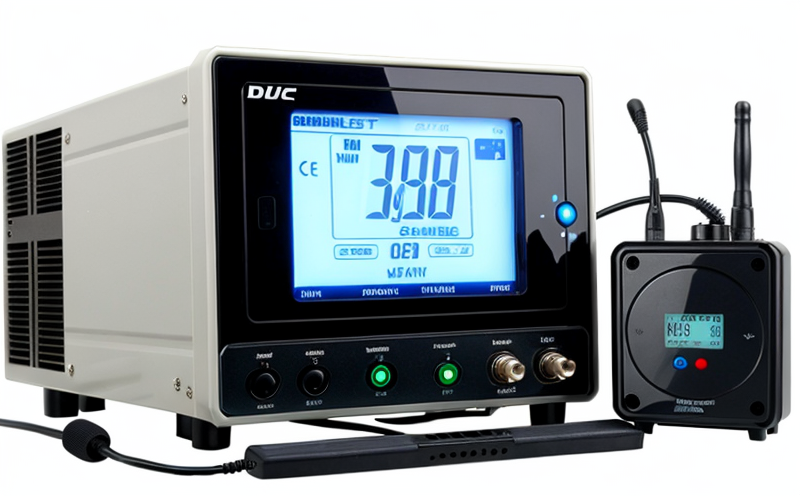Satellite Communication RF Link Testing
The development and deployment of satellite communication systems have seen significant advancements in recent years. These systems are pivotal to a wide range of sectors including defense, aerospace, telecommunications, and consumer electronics. As these technologies evolve, ensuring the robustness and reliability of their RF (Radio Frequency) links becomes increasingly critical.
Radio frequency communication is a complex area where even minor discrepancies can lead to significant disruptions in service. Satellite communication RF link testing is essential for verifying that all components function as designed under various environmental conditions. This process involves the thorough evaluation of satellite-to-ground and ground-to-satellite communications, ensuring signal integrity, stability, and performance.
At our laboratory, we specialize in providing comprehensive Satellite Communication RF Link Testing services. Our state-of-the-art facilities are equipped with advanced instrumentation that can simulate real-world scenarios to test the reliability of satellite communication systems. This includes testing for interference, signal strength, data rates, and error rates.
The process begins with a detailed review of the system specifications provided by our clients. We then perform rigorous testing using industry-standard equipment such as Vector Network Analyzers (VNAs), Signal Intertekometers, and Spectrum Analyzers to measure parameters like frequency response, phase noise, and signal-to-noise ratio.
Our team of experienced engineers ensures that every aspect of the RF link is thoroughly evaluated. This includes testing for interference from other electronic devices in the vicinity of the satellite ground station or orbiting satellites themselves. The results are meticulously documented and reported to our clients with clear recommendations for any necessary adjustments or improvements.
The importance of accurate and reliable communication cannot be overstated, especially in critical applications such as military communications, disaster relief operations, and global internet connectivity. By adhering to international standards like ISO 17823:2016 and ASTM E595-18, we ensure that our testing meets the highest quality benchmarks.
Our services are designed not only for satellite manufacturers but also for operators who need to validate their systems before launch. By partnering with us, you can rest assured that your communication infrastructure is fully prepared for real-world challenges and capable of delivering reliable performance under all conditions.
Benefits
Engaging in Satellite Communication RF Link Testing brings numerous benefits to organizations involved in the design, manufacturing, and operation of satellite systems. These include enhanced reliability, improved performance, reduced risk, and cost savings.
- Enhanced Reliability: By identifying potential issues early on, you can ensure that your satellite communication system operates flawlessly from launch until decommissioning.
- Improved Performance: Our testing ensures that your RF link meets all specified performance criteria, thereby maximizing the efficiency and effectiveness of your communications.
- Reduced Risk: Early detection of flaws through rigorous testing minimizes the chances of costly failures in operation. This also protects against potential regulatory penalties or reputational damage.
- Cost Savings: By avoiding costly repairs, rework, and downtime during operations, you can significantly reduce overall lifecycle costs associated with your satellite communication system.
In addition to these tangible benefits, there are intangible advantages such as improved reputation among customers and stakeholders, enhanced competitiveness in the market, and greater peace of mind knowing that your systems are thoroughly tested before deployment.
Competitive Advantage and Market Impact
The global satellite communication industry is characterized by stringent quality standards and intense competition. To stay ahead in this competitive landscape, organizations must ensure their products meet or exceed these rigorous requirements. Satellite Communication RF Link Testing plays a crucial role in achieving this goal.
By conducting thorough testing on your satellite systems, you gain a significant competitive edge over competitors who may not invest as heavily in quality assurance measures. This can translate into better product offerings, increased customer satisfaction, and higher market share.
The demand for reliable satellite communication services is growing steadily across various sectors. Whether it's military applications where reliability is paramount or civilian use cases such as broadband internet access, organizations that prioritize testing are better positioned to meet these demands effectively.
Furthermore, adhering to international standards like ISO 17823:2016 and ASTM E595-18 demonstrates your commitment to excellence. This not only builds trust with customers but also opens up new opportunities for collaboration and expansion within the industry.
Use Cases and Application Examples
Satellite Communication RF Link Testing finds application in diverse fields ranging from defense to consumer electronics. Here are some specific use cases:
- Military Applications: Ensuring secure and reliable communication channels for troops in remote locations.
- Aerospace Industry: Verifying the integrity of signals between spacecraft and ground stations.
- Telecommunications Companies: Testing the performance of satellite-based internet services before launch.
- Weather Forecasting Agencies: Guaranteeing accurate data transmission from satellites orbiting Earth.
In each case, the aim is to ensure that signals are transmitted and received without loss or distortion. This ensures that critical information reaches its intended destination accurately and promptly.
For example, during the development phase of a new satellite-based internet service, thorough RF link testing can reveal any weak points in the system early on. This allows for necessary adjustments to be made before deployment, reducing the risk of operational failures once the service is live.





